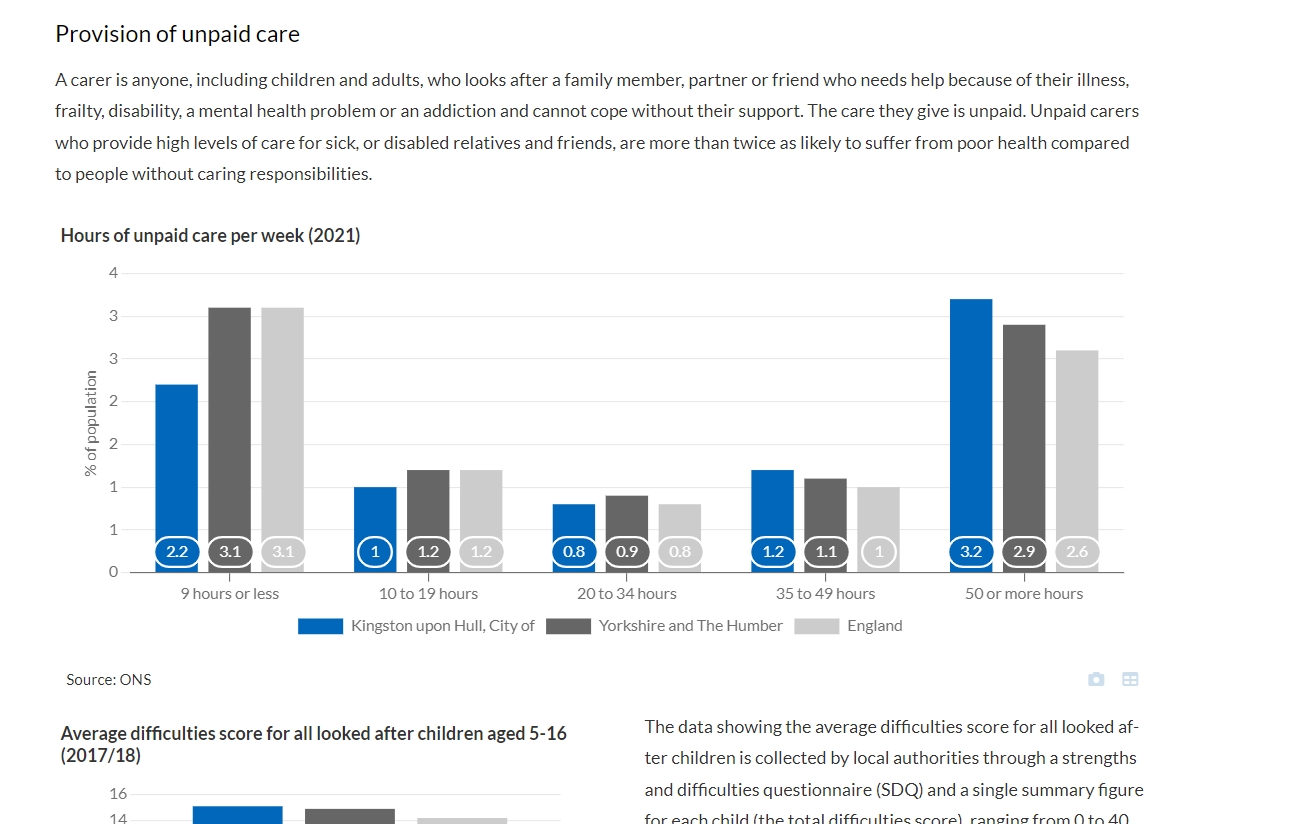The Hull Data Observatory has now been updated with the remaining Phase 1 univariate data from Census 2021.
Supplementing the first results, demography and migration and UK armed forces veterans data that had already been added, this update integrates data for the following topic summaries:
-
- Ethnic group, national identity, language and religion
- Labour market and travel to work
- Housing
- Sexual orientation and gender identity
- Education
- Health, disability and unpaid care
To give an idea of the scale of the undertaking, for Census 2021 we have now added about 3,800 indicators, 70 census tables and over 100,000 instances to the Hull Data Observatory.
These new indictors are located under different themes depending on the topic summary. The table below shows the top level theme in the National Data Service in each case.
| Census 2021 Topic Summary | Data Observatory Theme | Data Observatory Sub-Theme |
| Ethnic group, national identity, language and religion | Population | Ethnicity, Identity, Language and Religion |
| Labour market and travel to work | Economy | Economic Activity Status; Travel to Work; Industry and Occupation |
| Housing | Housing | Households; People with second address; Communal establishments |
| Sexual orientation and gender identity | Population | Sexual orientation; Gender identity |
| Education | Children and Young People | Qualifications; Population and Pupil Characteristics |
| Health, disability and unpaid care/td> | Health | Disability, General Health and Unpaid Care |
As with the previous updates, we have retained the structure the data were published in, and have also retained the name of the census table in the theme names and indicator names. This is helpful for users that are familiar with the way the census data is organised and/or the names of the tables.
Under each top level theme in the Hull Data Observatory, the old data from Census 2011 have been moved into a subtheme labelled Census 2011, to avoid confusion with the 2021 data.
Note that it is not the case that all data is available at all geographic levels. For example, the ‘detailed’ tables for Ethnicity, Identity and Religion do not contain data at LSOA 2021, nor do the tables for Sexual Orientation and Gender Identity.
The data are displayed in the following places:
1) Map Explorers

2) Data Explorer

3) Reports

